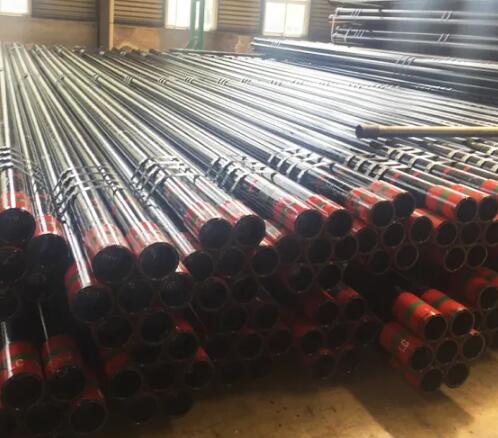Within the oil and gas industry, two essential components play distinct roles in facilitating the extraction, transportation, and distribution of hydrocarbons: line pipe and OCTG (Oil Country Tubular Goods). While both are critical, understanding their unique characteristics and applications is essential for ensuring efficient operations in the industry.

Differentiating Line Pipe and OCTG
Line Pipe: Line pipe refers to a type of steel pipe specifically designed for the transportation of fluids, primarily oil and natural gas, over long distances. These pipes are manufactured to withstand high pressures, corrosive environments, and variable temperatures. Line pipes are typically laid out in extensive networks of pipelines, forming the backbone of the oil and gas transportation infrastructure.
OCTG (Oil Country Tubular Goods): OCTG refers to a broad category of steel tubular products used in the construction and maintenance of oil and gas wells. OCTG includes casing, tubing, and drill pipes, which are essential for drilling, completion, and production operations. These tubular goods provide structural support, facilitate fluid flow, and ensure well integrity in various stages of well development.
Key Differences between Line Pipe and OCTG
Purpose and Application
Line pipes are primarily used for the transportation of oil, gas, and other fluids from production sites to refineries, processing plants, and distribution points. They are designed to withstand high pressures, facilitate efficient flow, and ensure the safe and reliable delivery of hydrocarbons.
On the other hand, OCTG products are specifically designed for use in well construction, completion, and production operations. Casing pipes are used to line the wellbore, providing structural support and isolating different formations. The tubing allows for fluid injection and production, while drill pipes facilitate drilling operations.

Construction and Specifications
Line pipes are manufactured with high-strength steel to withstand the demanding conditions of pipeline transportation. They undergo stringent quality control processes and are manufactured in various sizes, wall thicknesses, and grades to meet specific project requirements.
OCTG products are also made from high-quality steel and are subject to rigorous testing and inspection. However, their specifications differ based on their intended application. Casing pipes are available in various diameters, weights, and grades, depending on the well's depth, formation characteristics, and environmental factors. Tubing and drill pipes have specific dimensions and features suited for their respective functions.
Environmental Considerations
Line pipes are designed to withstand external forces, such as soil movement, external corrosion, and temperature variations. Coatings and corrosion protection measures are employed to ensure their longevity and operational integrity in diverse environments.
In contrast, OCTG products are subject to internal and external pressures, corrosive fluids, and extreme temperatures within the wellbore. Specialized coatings, such as corrosion-resistant alloys, are applied to protect against internal and external corrosion and erosion caused by fluid flow and downhole conditions.
Conclusion
Line pipes and OCTG play distinct roles in the oil and gas industry. While line pipes enable the efficient transportation of hydrocarbons over long distances, OCTG products provide structural support and facilitate drilling, completion, and production operations. Understanding these differences is crucial for optimizing operations and ensuring the successful extraction and delivery of oil and gas resources. We are an OCTG supplier. If you are interested in our products, please contact us now!



Comments
Please Join Us to post.
0